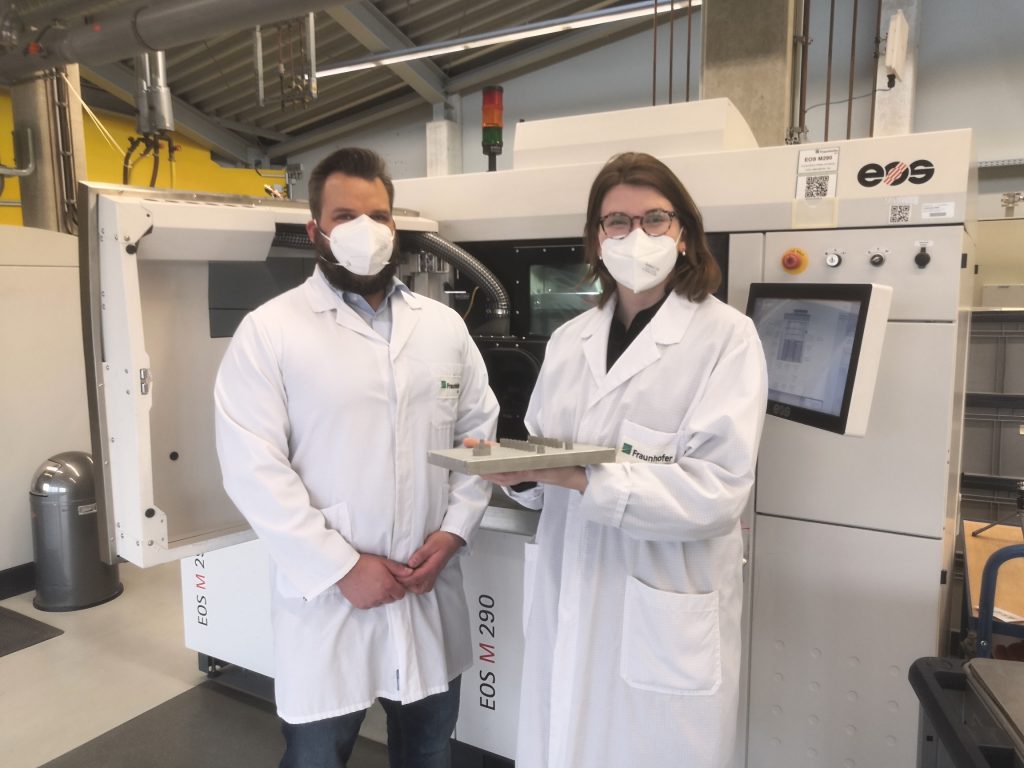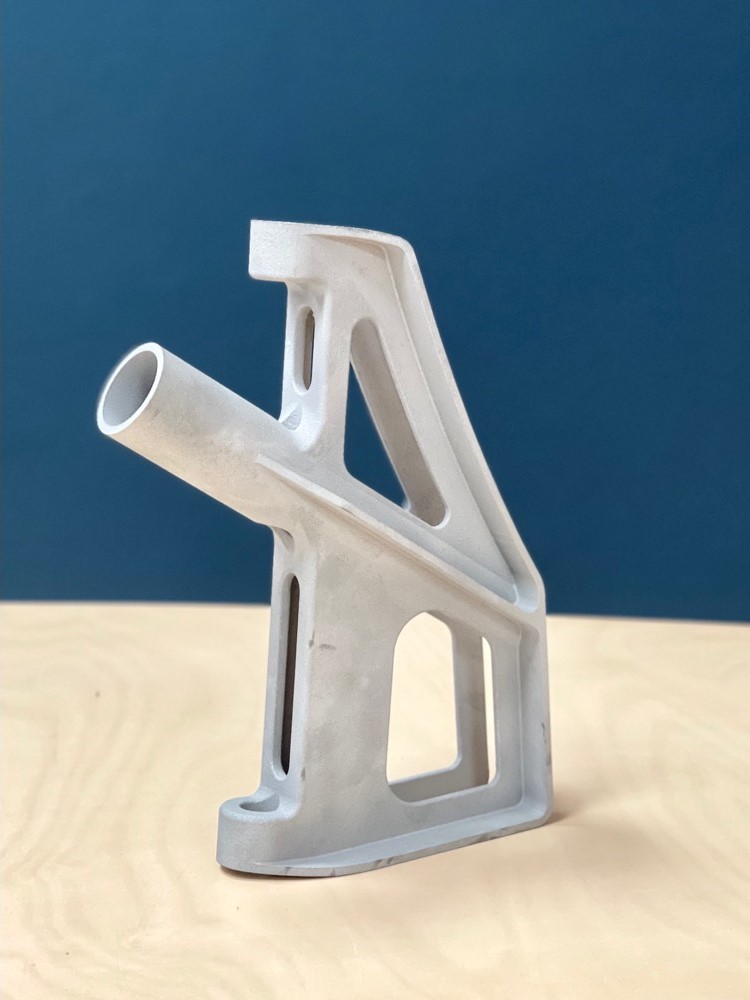AlMgty, a high-performance aluminum alloy from aluminum specialist Fehrmann Alloys’, has been qualified for use on multiple 3D printing systems, including those from 3D printer manufacturers EOS, SLM Solutions, and GE Additive business Concept Laser.
Extensive testing of AlMgty with 3D printers from the above companies revealed that, regardless of the machine, parts printed with the alloy achieved comparable mechanical properties and densities of more than 99 percent.

Fehrmann’s AlMgty alloy system
Fehrmann Alloys has more than 40 years’ experience in developing high-performance aluminum alloys, and is on a mission to “revolutionize” the development process for new materials using machine learning, artificial intelligence (AI), and digital transformation tools.
The company released its first AlMgty alloy, AlMgty 80, in the Autumn of 2019, claiming to have made it possible to produce any number of parts with one alloy for the first time using four different processes – 3D printing, sand casting, mold casting, and die casting.
AlMgty is described by Fehrmann Alloys as not just a material but an alloy system, which can be altered to achieve different mechanical properties in line with the firm’s customers’ demands. The alloy can be used to produce metal parts via selective laser melting (SLM) and laser metal deposition (LMD) 3D printing processes.
Since then, Fehrmann has introduced another silicon-free high performance AlMgty alloy that enables color to be added to 3D printed metal parts, and last year released AlMgty 90, which exhibits increased strength and a 25 percent higher hardness than its predecessor.
Most recently, AlMgty has been leveraged to 3D print a rudder blade suspension for the Australian sailing team’s Olympic 470 class sailboats, propelling the team to the top of the podium at Tokyo 2020.

Qualifying AlMgty for EOS, SLM Solutions and Concept Laser
After extensive tests, AlMgty has now been qualified for use on multiple 3D printing systems, including the SLM 280, EOS M 290, and Concept Laser M2 printers. The aluminum alloy has been proven to meet the production requirements of these machines for industrial manufacturing purposes.
While the alloy’s productivity is reportedly similar to that of typical aluminum 3D printing powders, such as AlSi10Mg, AlMgty has the benefit of enabling parts with tailored mechanical properties to be manufactured with the same powder. This significantly improves flexibility within the printing process, while offering superior levels of strength and ductility to parts.
When ordering AlMgty for use on the SLM, EOS and Concept Laser machines, customers will be supplied with printing parameters that are individualized to each machine.

Advances in 3D printed aluminum
Although desirable for its lightweight properties, aluminum tends to soften over time and lose its rigidity when exposed to high temperatures. As such, manufacturers have often opted for titanium or steel for their high-performance applications.
Saying this, there has been a fair amount of development within the 3D printing sector to optimize and leverage the benefits of aluminum alloys, delivering parts with higher levels of thermal stability and tensile strength.
For instance, last year metal 3D printing specialist Amaero revealed its high-performance aluminum alloy, Amaero HOT AI, had entered the final stage of patent approval, while QuestTek Innovations partnered with the German Aerospace Center to develop a novel 3D printable alloy that exhibits high strength at temperatures between 200 and 300°C.
Since then, 3D printer manufacturer Desktop Metal has worked with Uniformity Labs to launch a new sinterable aluminum powder for use with its binder jet 3D printing technology, and Skoltech scientists have utilized a novel aluminum developed with global materials provider RUSAL to 3D print casings for the Yarilo satellite.
In June, Italian 3D printing service provider BEAMIT revealed it had developed a parameter set for 3D printing the high-performance aluminum alloy al2024 alongside Elementum 3D. The companies were able to formulate a highly resilient metal that remains lightweight yet exhibits excellent thermal resistance, which is suitable for producing end-use parts in the automotive sector.
Subscribe to the 3D Printing Industry newsletter for the latest news in additive manufacturing. You can also stay connected by following us on Twitter and liking us on Facebook.
Looking for a career in additive manufacturing? Visit 3D Printing Jobs for a selection of roles in the industry.
Subscribe to our YouTube channel for the latest 3D printing video shorts, reviews and webinar replays.
Featured image shows AlMgty has been qualified on the EOS M290 3D printing system. Photo via Fehrmann Alloys.



